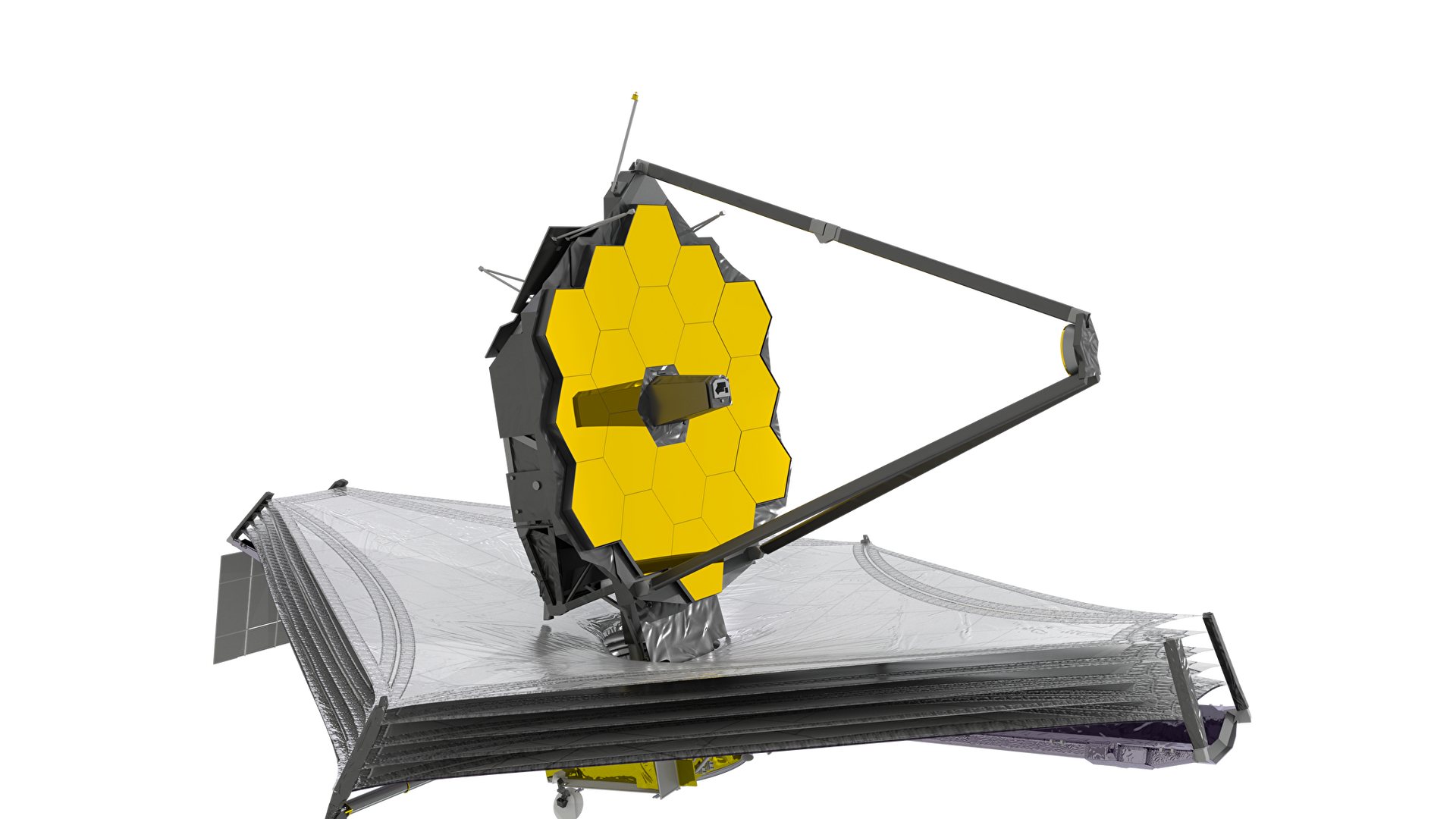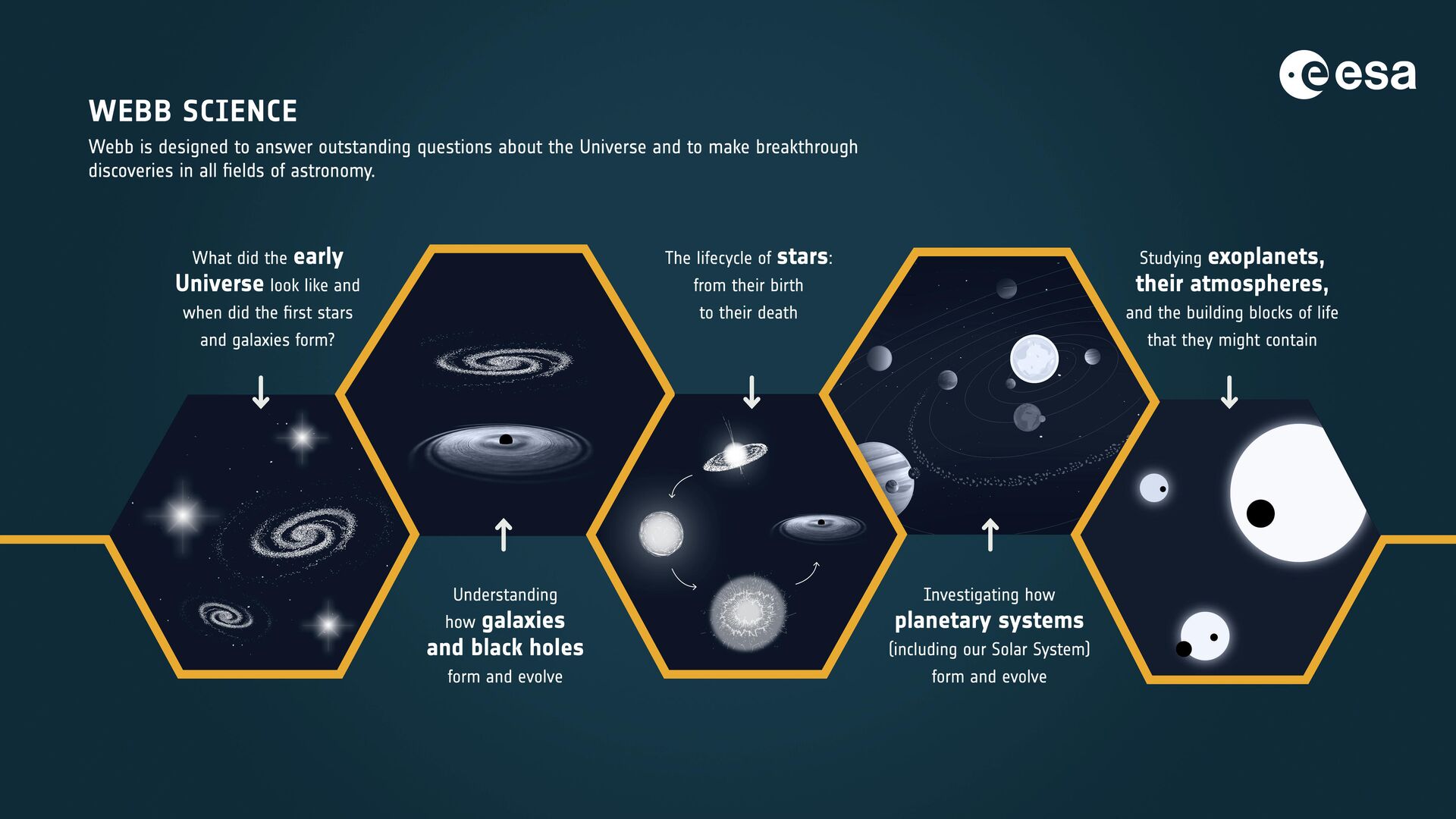Cosmologists Plan to Map Dark Matter Around Galaxies Using Most Powerful Space Telescope
15:04 GMT 08.09.2021 (Updated: 16:59 GMT 12.04.2023)

© Photo : ESA/ATG medialab
Subscribe
In the footsteps of the Hubble Space Telescope follows another space science observatory, called the James Webb Space Telescope (Webb).
The launch of the telescope is set for 1 October from Europe's Spaceport in French Guiana.
The European Space Agency's plans for the Webb are to answer outstanding questions about the universe and to "make breakthrough discoveries in all fields of astronomy".
Scientists hope for the space observatory is to reveal information about the formation of stars and planets, as well as the birth of the first galaxies in the early universe.
18 December 2021 is the target launch date for the James Webb Space Telescope!
— ESA Webb Telescope (@ESA_Webb) September 8, 2021
This was jointly defined by @esa, @NASA and @Arianespace. @ariane5 flight VA256 will fly #Webb to space from Europe’s Spaceport in French Guiana. #WebbFliesAriane
👉 https://t.co/EIu6wmbAou pic.twitter.com/0KdSopZBFR
The Ariane 5 launch vehicle will deliver the telescope directly into a precision transfer orbit towards its destination, the second Lagrange point (L2).
“We now know the day that thousands of people have been working towards for many years, and that millions around the world are looking forward to. Webb and its Ariane 5 launch vehicle are ready, thanks to the excellent work across all mission partners. We are looking forward to seeing the final preparations for launch at Europe’s Spaceport”, said Günther Hasinger, ESA director of science.
After it separates from the Ariane 5, Webb will continue its journey to L2 alone for four weeks. L2 is located four times farther away than the Moon, 1.5 million km from Earth in the direction away from the Sun.

Webb is an international partnership between NASA, the European Space Agency (ESA) and the Canadian Space Agency (CSA).
© Photo : ESA
The ESA hopes to get answers about the hidden parts of the Solar System, the dust clouds, as well as reveal the composition of exoplanets' atmospheres in more detail.
Webb will cover longer wavelengths of light than the Hubble Space telescope and has a 100-times improved sensitivity, which opens up a new window to the universe, the agency reported.


